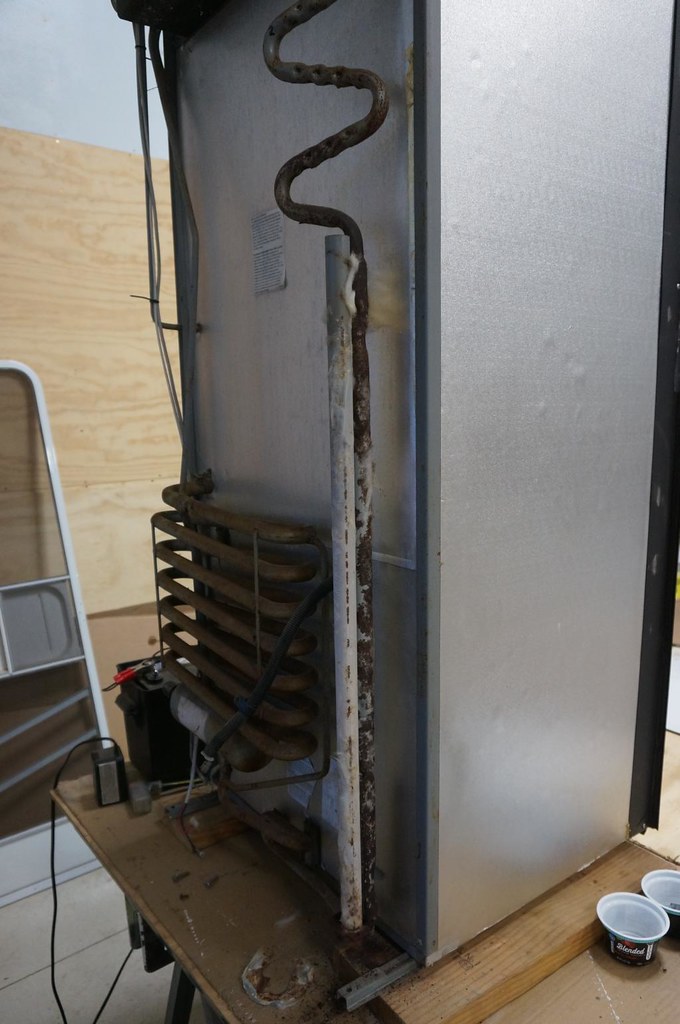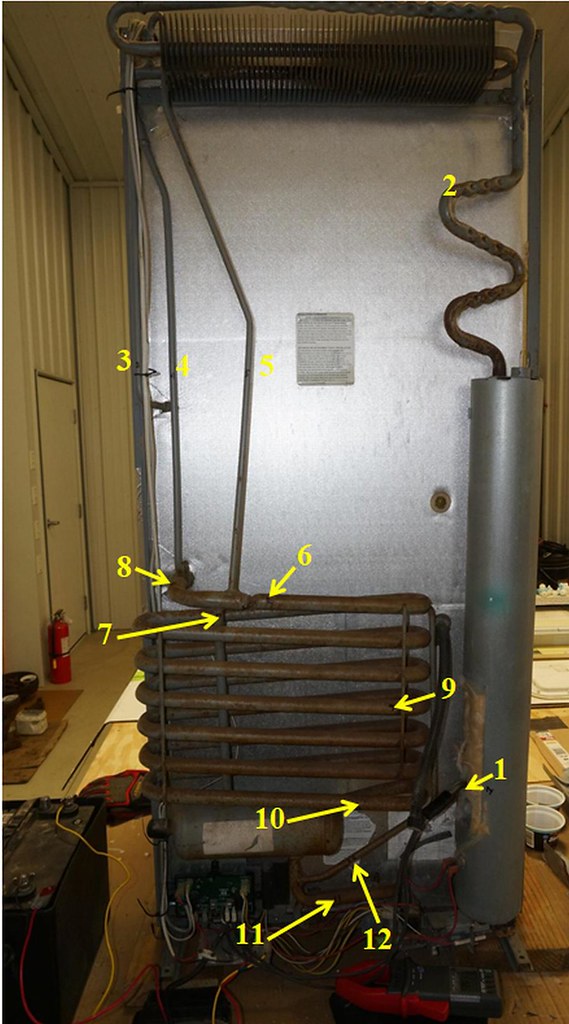Forum Discussion
JBarca
Jun 13, 2023Nomad II
Curious about Doug's response to your last pics. Here are my thoughts.
Stop poking at the baffle; you have very little rust in the burner tube, and poking at it can damage or, worse, unhook the baffle from the draw rod. There does not look like any evidence of mud daubers' nests.
The yellow in the burner tube and the glob under it doesn't look good. As you heat the boiler tube with the electric element, the metal expands, and any thin crack in a weld or fatigued joint can start to open, allowing the coolant to start to leak. You may be at the start of the cooling unit failure.
Do you smell any ammonia type of scent when the unit is heating?
Doug has seen more of these failures than I have, and he has the 24-hour full-on electric element test he can report better on than I can.
These pics are of an actual 2004 RM2652 undergoing restoration for water damage, and I service the appliances. They may help you understand what is going on behind the burner insulation. This fridge is a working one, not a failed one.
I did tests to see what the boiler area and the cooling coil temps were at to see what normal is supposed to be.
This is the raw cooling coil out in the open.


Here is the operation test. The fridge is running under its control system, and I recorded readings at the l location until the unit cycled off the electric element.

Here is location 1, the steel sleeve the electric element is in.

Here is the first set of data.

The second test with more data. I had a cup of water in the freezer and a gallon jug in the fridge as a load for the refrigerator to work on. The remote thermometer is inside the fridge
compartment

Hope this helps
John
Stop poking at the baffle; you have very little rust in the burner tube, and poking at it can damage or, worse, unhook the baffle from the draw rod. There does not look like any evidence of mud daubers' nests.
The yellow in the burner tube and the glob under it doesn't look good. As you heat the boiler tube with the electric element, the metal expands, and any thin crack in a weld or fatigued joint can start to open, allowing the coolant to start to leak. You may be at the start of the cooling unit failure.
Do you smell any ammonia type of scent when the unit is heating?
Doug has seen more of these failures than I have, and he has the 24-hour full-on electric element test he can report better on than I can.
These pics are of an actual 2004 RM2652 undergoing restoration for water damage, and I service the appliances. They may help you understand what is going on behind the burner insulation. This fridge is a working one, not a failed one.
I did tests to see what the boiler area and the cooling coil temps were at to see what normal is supposed to be.
This is the raw cooling coil out in the open.


Here is the operation test. The fridge is running under its control system, and I recorded readings at the l location until the unit cycled off the electric element.

Here is location 1, the steel sleeve the electric element is in.

Here is the first set of data.

The second test with more data. I had a cup of water in the freezer and a gallon jug in the fridge as a load for the refrigerator to work on. The remote thermometer is inside the fridge
compartment

Hope this helps
John
About Technical Issues
Having RV issues? Connect with others who have been in your shoes.24,344 PostsLatest Activity: Dec 26, 2025